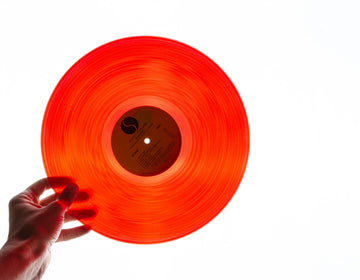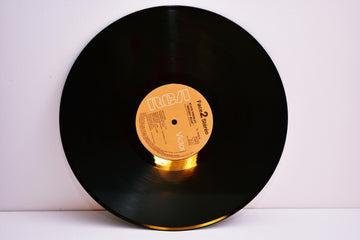How to Spot a Mint vs Mispress Vinyl (Collector’s Guide)
Two copies of the “same” record can have very different value. One is a pristine, mint keeper. The other is a mispress—a manufacturing error that may be collectible, or a costly headache. Here’s a step-by-step guide to help you evaluate records in the UAE and beyond with confidence.
Mint, Near Mint, VG+: What the Grades Really Mean
In collector circles, the Goldmine standard is widely used for grading. Mint (M) means factory-fresh: no spindle trails, no hairlines, no storage wear—extremely rare in the wild. Most “like new” copies are actually Near Mint (NM) or Very Good Plus (VG+) [Goldmine Guide].
| Grade | What you should (not) see |
|---|---|
| Mint (M) | No visible marks. Unplayed. Jacket perfect—no ringwear or splits. |
| Near Mint (NM) | Maybe one or two very faint hairlines under strong light. Jacket crisp. |
| VG+ | Light scuffs or small marks; plays well with minimal noise. Minor jacket wear. |
Pro tip: In bright, directional light, tilt the record slowly—true mint has a glassy, unmarred sheen.
What Counts as a Mispress (or Misprint)?
A mispress is a manufacturing error: wrong label, mixed-up tracks, misaligned grooves, wrong color vs. advertised spec, or incorrect run-out etching. Some mispresses are pulled and destroyed; a few escape and become curiosities tracked by collector databases like Discogs [Discogs Collector Guide] [Discogs Forum].
- Label mismatch: Side A label printed on Side B, or labels from a different album.
- Track order error: Songs in the wrong sequence vs. jacket/official tracklist.
- Color mismatch: Advertised black pressing but vinyl is colored/translucent (or vice-versa).
- Deadwax anomaly: Run-out etching doesn’t match the catalog number/mastering code.
Inspection Checklist (5 Steps)
- Lighting: Use a bright LED or directional lamp. Rotate the record to reveal hairlines or non-fill. [London Jazz Collector]
- Run-out (deadwax) codes: Note the etchings and compare with documented pressings on Discogs. [Discogs Guide]
- Label & sleeve consistency: Fonts, spacing, and logo placement should match the sleeve’s era.
- Play test: If possible, check for unexpected silence, skips, or different songs than listed.
- Document: If you suspect a mispress, photograph labels, deadwax, and sleeve for future reference/resale.
Mint vs Mispress: Value and Rarity
Not all mispresses are valuable. Collectability depends on artist demand, how many slipped into circulation, and whether the error is musically interesting (e.g., alternate mix). Many are worth less than a standard correct copy. Cross-check comps and sales history on Discogs/eBay before paying a premium [Discogs Guide].
Special Notes for Collectors in the UAE/GCC
- Climate: Heat and humidity can warp vinyl and crisp jackets. Store vertically in climate control.
- Accessories: Use anti-static inner sleeves, outer poly sleeves, and a carbon brush before each play.
- Arabic/Gulf pressings: Smaller runs and older plants can mean more variance—inspect carefully and record matrix info.
Shop care accessories and cleaning kits: Accessories • Cleaning & Protection
Quick Reference Table
| Mint Signs | Mispress Flags |
|---|---|
| Mirror-clean surface; no trails | Wrong label or side indicators |
| Correct matrix/run-out codes | Deadwax doesn’t match catalog |
| Jacket & insert match pressing year | Track order differs from printed list |
| Plays without noise or surprises | Unadvertised color/weight variant |
References
- Goldmine: Vinyl Grading Basics
- Discogs: Collecting & Pressing Guide
- Discogs: Mispress vs Misprint Discussion
- London Jazz Collector: Examining Records





